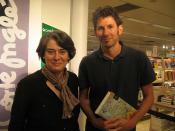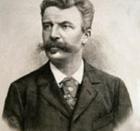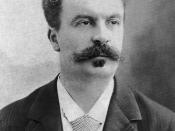Guy de Maupassant's "The Necklace" is situational irony
written in 1884. The story was written in a time when there were very
distinct social classes primarily determined by one's birth. It is about
a woman who can not come to terms with her position in the middle
class. Although she knows she can not escape her class, she
refuses to accept it gracefully. It is through Matilde that Maupassant
develops the story's irony. This is reflected through Matilde's
daydreaming, which only serves to torment her, the loss of the
necklace borrowed for show, which only worsens their economic
position, and finally, their unnecessary sacrifice.
The irony begins with Matilde's frequent daydreaming. She is a
beautiful and charming woman who feels "herself destined for all
delicacies and luxuries" (4). Fate, however, placed her among the
middle class where life was very simple. For her, the only means to
a more affluent class was through her imagination.
She dreams of
"large silent anterooms, expensive silks and of achievement and fame
that would make her the envy of all other women" (4). What she fails
to realize is that these daydreams only make her more dissatisfied
with her real life. As a result, she becomes more focused on what
she does not have rather than what she does have.
Contributing to the irony is the borrowed necklace. Matilde's
husband brings a coveted dinner invitation home, and her first
reaction is concern for appearances. She tells her husband that they
can not possibly go because she has "nothing to wear" (5). Her
husband agrees to buy her a new dress. This, however, is not
enough for Matilde; she needs jewelry. She explains that, without
jewelry, she will appear "shabby in the company of rich women" (6).
In her quest...


